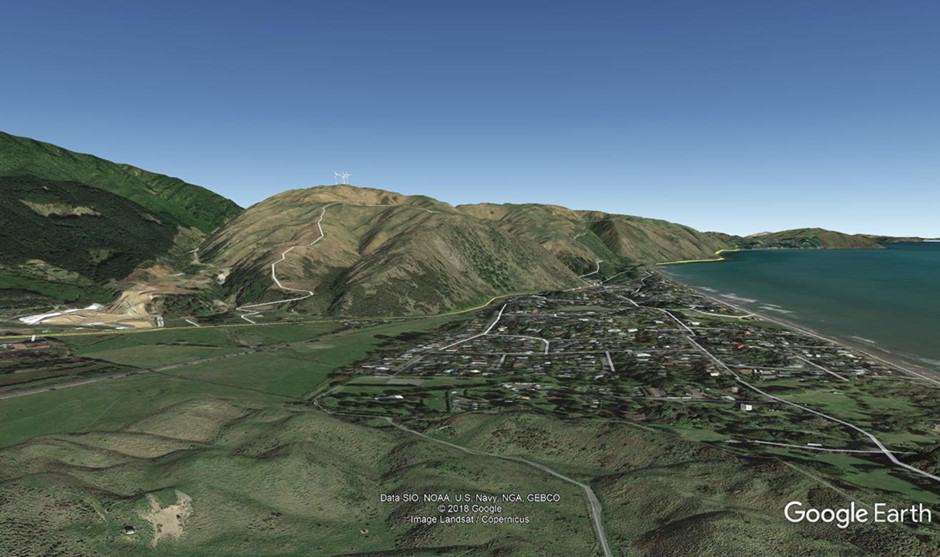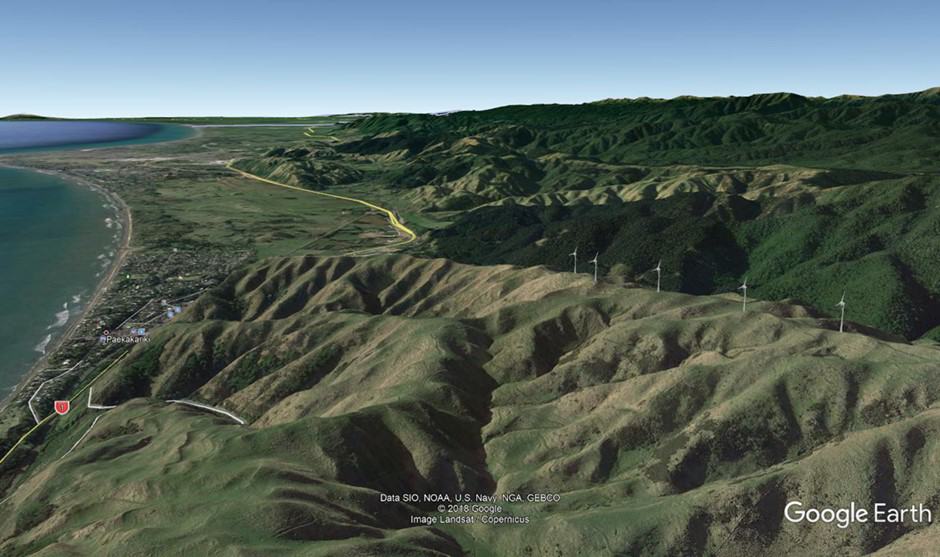By Graeme Mills, 30 September 2022
A potential wind electricity-generating project exists on the hills above Paekākāriki. The objective of the project is to provide renewable energy to the village of Paekākāriki, with surplus energy distributed via the local line network to other parts of Kāpiti.
It is hoped that the community would have an opportunity to invest in the Project and contribute to NZ’s sustainability targets in a meaningful way. However, it is unlikely (but not impossible) that the community would be able to fully fund the Project, and it would need a ‘cornerstone investor’ to make it happen, and to operate it on the electricity market. The total capital cost would be between $15 M and $20 M.
The project involves up to 5 wind turbines, with a combined output of 4.5 MW. We started taking wind speed measurements in 2014. The results of this and feasibility studies also undertaken confirmed that the project is a realistic opportunity and a competitive contender in the NZ electricity market.
The lack of land access certainty has delayed a resource consent application for the turbines for over 5 years. It is hoped that a solution to land access can be found now that TG is finished.
A wind monitoring mast was erected on the site in August 2014. The mast height is 31 m, and while not operating at present, it measured at heights of 15 m, 30 m and 31 m. The average wind speed at 30 m over the 5 years of measuring is about 9.0 m/s (or 18 Knots, or 32 km/hr).
The wind turbines are likely to be similar to the ‘new’ Wellington (Brooklyn) wind turbine, with a hub height 45 m, a rotor diameter 44 m, and each rated at a power of 900 kW. Five turbines would generate about 15.1 GWh/ year, equivalent to the load of about 1883 houses per year (@ 8,000kWh/house/year).

Once land access is gained, a resource consent application could be lodged quite quickly, and the project could be operating within 3 years (subject to gaining those consents).
The vision is a project that directly benefits the community. The concept was given its initial support via the Paekākāriki Community Trust (PCT). The PCT needed to be sure of community support before progressing the wind farm project.
There was consultation with the community that involved information sheets, radio and TV exposure, two public meetings in St Peters hall (approx. 150 people) and a survey of the community. Support from about 95% of the community was expressed.

So in summary:
- There is what appears to be a technically and commercially feasible wind project on the hills above Paekākāriki
- While access to the land required to make it happen has been frustrated for several years, there have been positive discussions recently which could see a solution soon
- With access to the land, an application for resource consent could be considered
- Funding for consent studies (ecology, archaeology, cultural etc) and the application itself would need to be sought.
- Further consultation with key stakeholders and the community would be undertaken to ensure the project is still supported.
- If consent is gained, then detailed project engineering, procurement and commercial analysis would be undertaken.
- The development structure in terms of financing and ownership would be determined at this stage.
